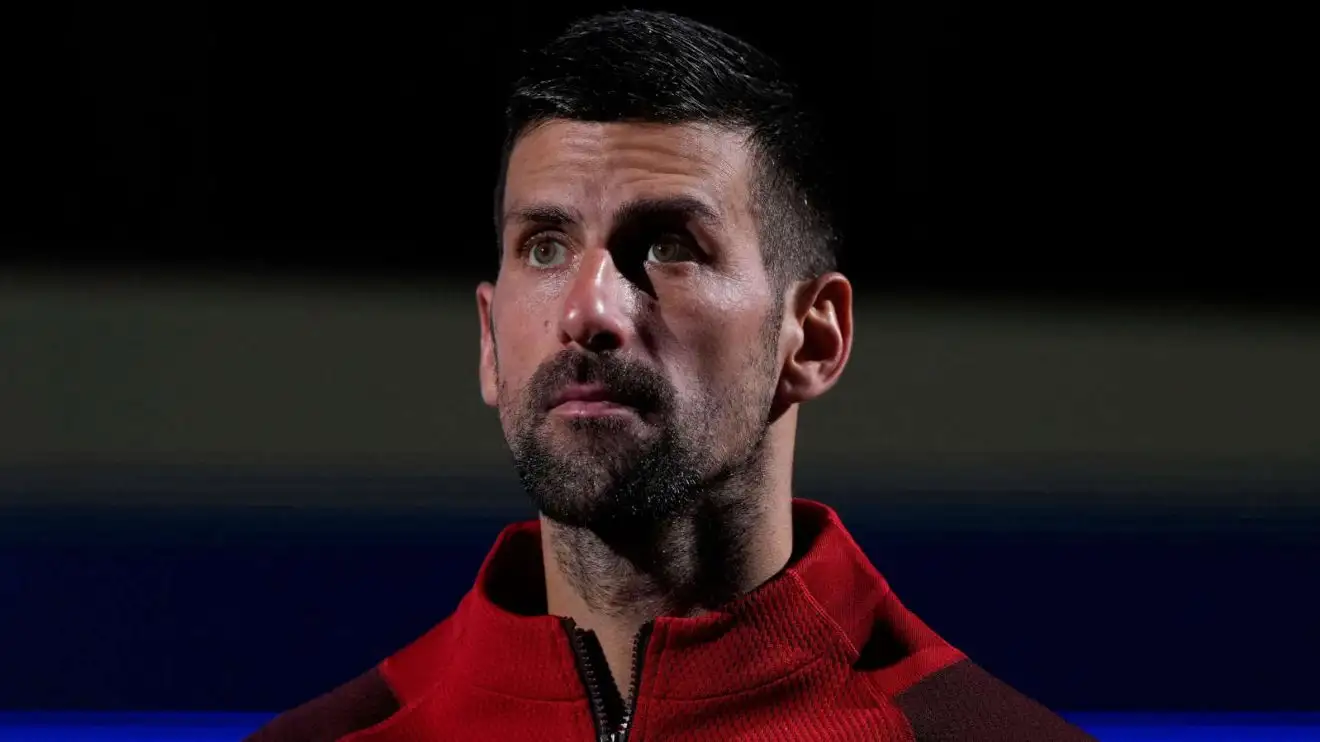
Novak Djokovic’s legendary return of serve has been a hallmark of his illustrious tennis career, widely regarded as one of the best—if not the best—in the history of the sport. His ability to break his opponents’ serves and turn defense into offense has been instrumental in his success, leading to 24 Grand Slam titles and numerous accolades. However, the 2024 season presented a different story for Djokovic, as one of his greatest strengths showed signs of decline at crucial moments.
This year was uncharacteristically challenging for the 37-year-old Serbian. Djokovic’s last competitive outing came at the Shanghai Masters, where he was defeated by current world No. 1 Jannik Sinner, 7-6(4), 6-3, in the final. Reflecting on his season after that match, Djokovic offered a candid evaluation of his performance. “Well, I mean, comparing to most of my seasons throughout my career, this has been one of the worst-performing seasons in terms of results,” he admitted. “But, you know, it was going to come at some point where, you know, I wouldn’t win Slams and maintain that highest level for so many years in a row.”
This blunt assessment underscores the difficulties Djokovic faced in maintaining the dominance that has characterized much of his career. While he showed flashes of brilliance, particularly in the first set against Sinner, Djokovic struggled to make any impact on the Italian’s serve. Not once in that match did he create a break point opportunity or even push Sinner’s service games to deuce. This lack of return pressure was part of a troubling trend for Djokovic in 2024—a stark contrast to his historically dominant return game.
The match against Sinner in Shanghai was the fourth time this season that Djokovic ended a match without generating a single break point. This is a notable departure from the consistency he displayed between 2018 and 2023, a period during which he played 354 matches and always managed to create at least one break point. In 2024, Djokovic’s other matches without break points were losses to Alex de Minaur at the United Cup, Sinner at the Australian Open, and Alejandro Tabilo at the Italian Open.
These matches highlighted a rare vulnerability in Djokovic’s return game. His defeat to de Minaur in the United Cup quarterfinals ended 4-6, 4-6, with Djokovic unable to exert his usual pressure on his opponent’s serve. Similarly, at the Australian Open semifinal, Sinner dominated the first two sets before Djokovic mounted a brief comeback, ultimately losing 1-6, 2-6, 7-6(6), 3-6. In the Italian Open, Djokovic fell in straight sets to Tabilo, 2-6, 3-6, once again unable to generate break point opportunities.
For a player of Djokovic’s caliber and reputation as the sport’s premier returner, these matches were surprising and concerning. Former world No. 1 Mats Wilander weighed in on the issue during the 2024 French Open, suggesting that Djokovic’s return game “was definitely not where it used to be.” While Wilander’s comment pointed to a decline, it is important to consider the broader context of Djokovic’s season.
Despite these struggles, Djokovic remains one of the best returners statistically. He ranks third on the ATP Tour’s Return Leaders statistical leaderboard for the 2024 season, with a return rating of 157.7. Only Alex de Minaur (167.7) and Carlos Alcaraz (164.4) boast better ratings. The return rating is calculated based on several factors, including the percentage of first and second serve return points won, the percentage of return games won, and the percentage of break points converted. This ranking highlights Djokovic’s continued excellence on return overall, even if his performances at key moments have been below his typical standard.
Djokovic’s struggles in 2024 raise questions about what might have contributed to his inconsistency on return. Age and the physical toll of competing at the highest level for nearly two decades could be factors. Additionally, the competition at the top of the game has become fiercer, with younger players like Sinner and Alcaraz continuing to push the limits of athleticism and precision on the court. Djokovic has always prided himself on adapting and evolving his game, but the margins are becoming ever finer.
His decision to withdraw from the Paris Masters and the ATP Finals to close out the season could indicate a desire to rest, recover, and recalibrate. Djokovic’s career has been defined by his resilience and ability to rebound from setbacks, and it would be premature to count him out based on one challenging season. Still, the signs from 2024 suggest that he faces new challenges as he continues to compete against a younger generation of stars eager to claim the spotlight.
As Djokovic prepares for the future, the tennis world will watch with anticipation to see if he can once again adapt his game and regain his edge. His place among the sport’s greats is already secure, but his quest for continued success is far from over. Whether 2024 proves to be a temporary setback or a more lasting challenge, Djokovic’s determination and legacy of greatness ensure that he will remain a force to be reckoned with in the years to come.
Leave a Reply